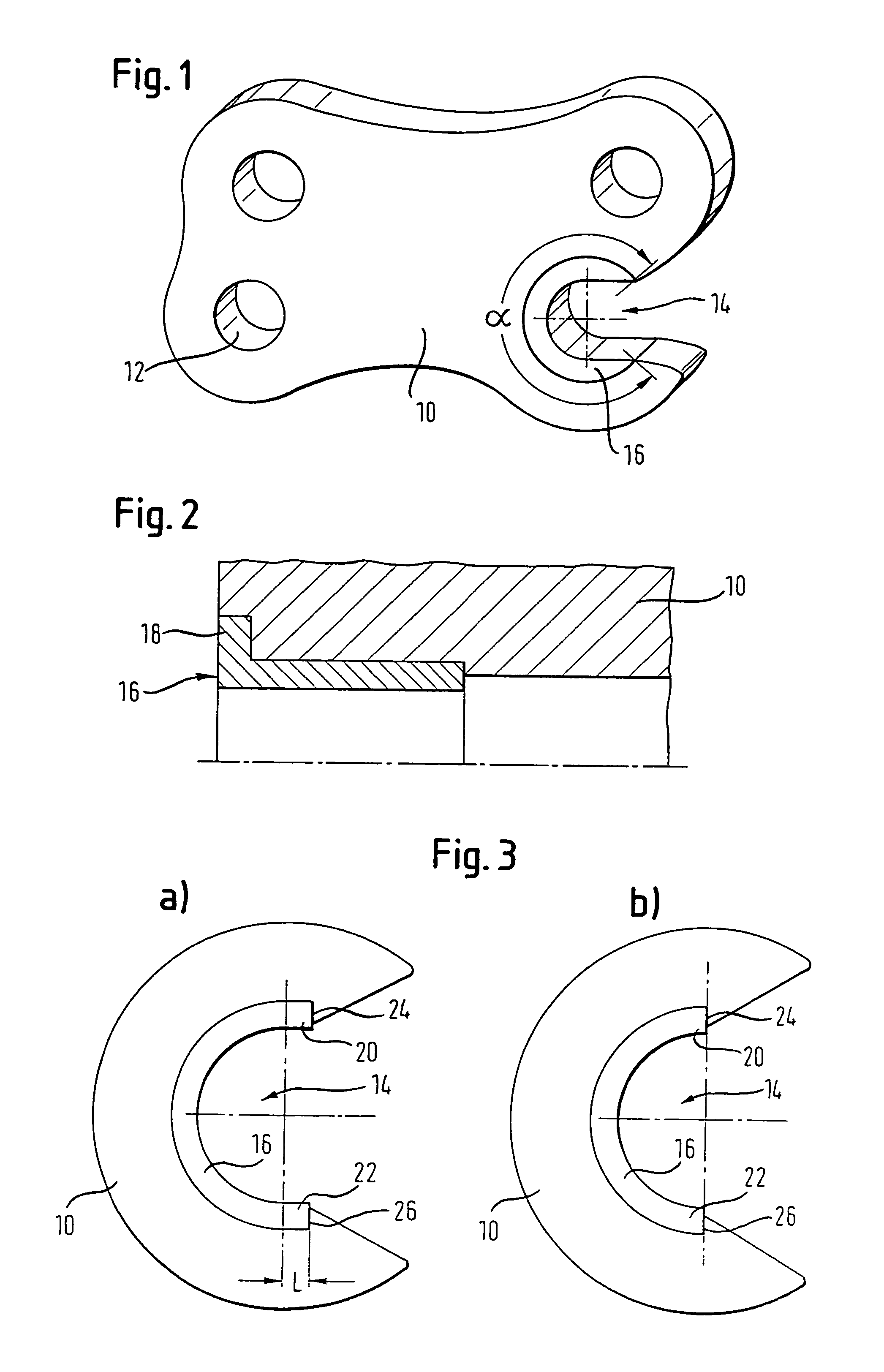Quick-change attachment
a quick-change attachment and attachment technology, applied in the direction of bearings, shafts, rod connections, etc., can solve the problems of extended out-of-service period, significant wear of bearings, and considerable expense, and achieve the effect of simple and cost-effective extension of the tool life of the quick-change attachmen
- Summary
- Abstract
- Description
- Claims
- Application Information
AI Technical Summary
Benefits of technology
Problems solved by technology
Method used
Image
Examples
Embodiment Construction
[0016]The quick-change attachment component 10 shown in FIG. 1 is pivotally attached to a stalk, not shown, of the boom of a hydraulic excavator, for example. Quick-change attachment component 10 pivots in the familiar manner via a swiveling link plate, also not shown, about a pivot axis perpendicular to the longitudinal axis. Quick-change attachment component 10 has a bore hole 12 to accommodate a tool-connecting pin, not shown here. In addition, quick-change attachment component 10 has a bearing 14 in which another pin of the tool, not shown, is retained by positive fit or frictional engagement
[0017]According to the invention, a bushing 16 is inserted in bearing 14, bushing 16 being composed of a material which is more wear-resistant than the material of quick-change attachment component 10. Bushing 16 is fixed within a bushing support region of bearing 14, whereby this attachment may be implemented by an adhesive-bonding joint, shrink joint, welded joint, and / or screw connection,...
PUM
 Login to View More
Login to View More Abstract
Description
Claims
Application Information
 Login to View More
Login to View More - R&D
- Intellectual Property
- Life Sciences
- Materials
- Tech Scout
- Unparalleled Data Quality
- Higher Quality Content
- 60% Fewer Hallucinations
Browse by: Latest US Patents, China's latest patents, Technical Efficacy Thesaurus, Application Domain, Technology Topic, Popular Technical Reports.
© 2025 PatSnap. All rights reserved.Legal|Privacy policy|Modern Slavery Act Transparency Statement|Sitemap|About US| Contact US: help@patsnap.com


